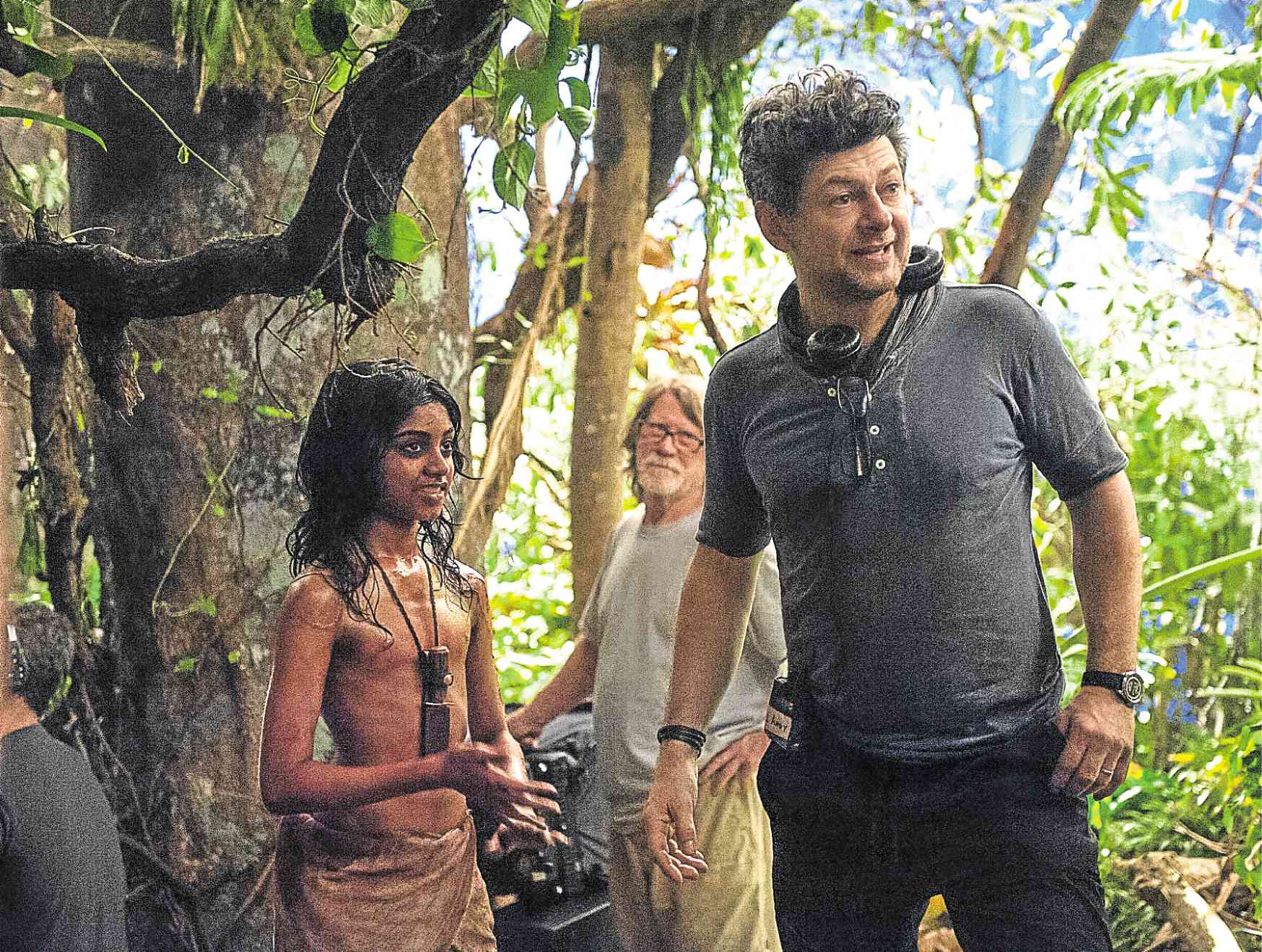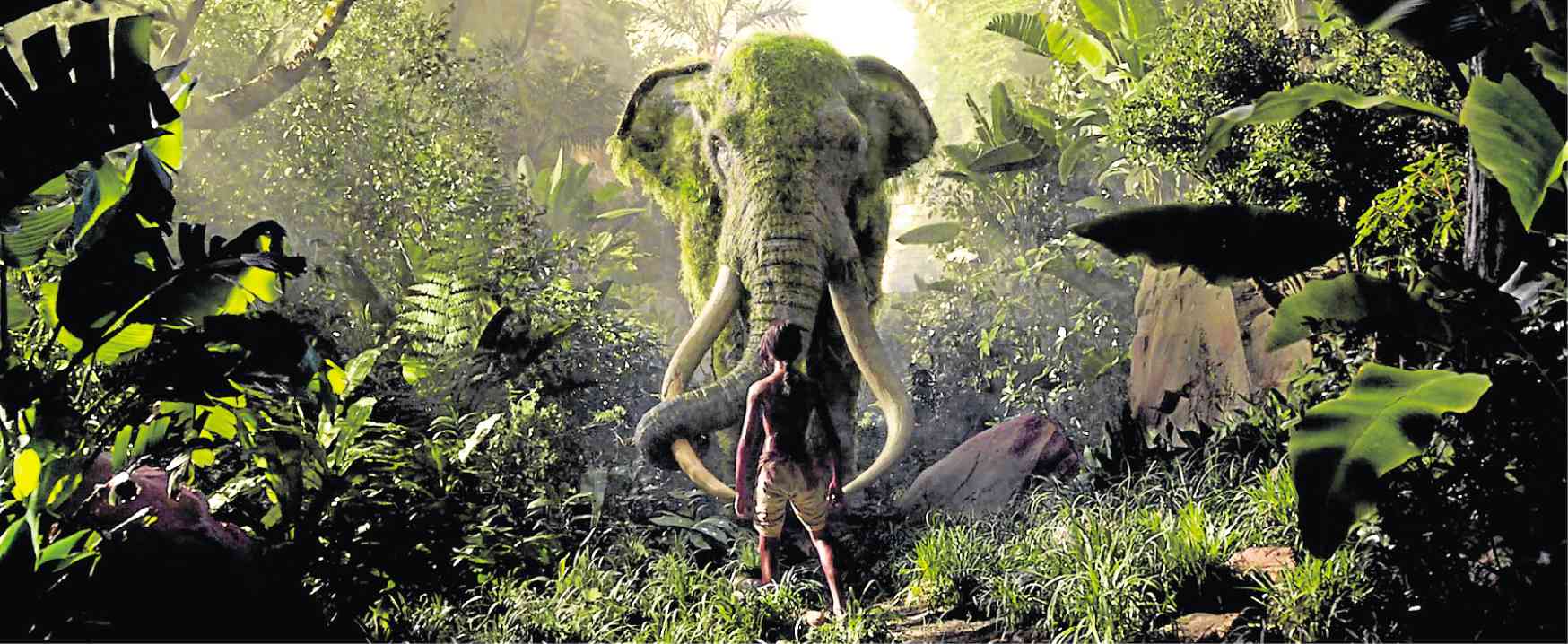Andy Serkis breathes new life into Mowgli and those ‘Jungle’ creatures
SINGAPORE—It’s been 125 years since the well-loved tales featured in Rudyard Kipling’s “The Jungle Book” first came out in magazines, but the Nobel Prize-winning author’s compilation has remained popular through its many incarnations in the media.
Its latest iteration, actor-director Andy Serkis’ “Mowgli: Legend of the Jungle,” which will be streamed on Netflix beginning Dec. 7, paints a bleaker but more realistic portrait of Mowgli (Rohan Chand), a “man cub” raised by a pack of wolves in the Indian jungle.
With his friends Bagheera the panther (voiced by Christian Bale) and Baloo the bear (Andy Serkis) watching his back against the cunning tiger Shere Khan (Benedict Cumberbatch), Mowgli’s coming-of-age story sees him torn between two worlds as he embarks on a quest for self-identity and survival.
“But, the Baloo that you’ll see in this movie is different from how he has been portrayed in the past,” Andy cautioned journalists at Netflix’s recent See What’s Next Asia slate event in Singapore last month. “If you’re expecting Baloo to dance and sing ‘Bare Necessities,’ as he did in Disney’s animated film, I’m sorry, but you’ll be disappointed.
“In this version, Baloo is much more like the drill sergeant in Stanley Kubrick’s ‘Full Metal Jacket.’ He’s tougher and, while he has great affection for Mowgli, he never shows it. He’s hard on the kid because that’s his function in the wolf pack. He neither sings nor cracks jokes.”
Article continues after this advertisementAndy’s “survival story” presents human archetypes in animal form as it delivers provocative musings on nature versus nurture.
Article continues after this advertisementAlso figuring prominently in the story are the mysterious rock python Kaa (Cate Blanchett, a creepy “presence”), the canines Nisha, Akela, Vihaan and Brother Wolf (Naomie Harris, Peter Mullan, Eddie Marsan, Jack Reynor), the elephant Hathi (Jonathan Rhys Meyers) and the bullied wolf cub Bhoot (Louis Serkis).

Rohan Chand (Mowgli) and director Andy Serkis (right) on the set of the Netflix film, “Mowgli: Legend of the Jungle”
‘Wild’ creatures
Later, when Mowgli is forced to address issues about his humanity, he realizes that dealing with humans, like the ambiguous John Lockwood (Matthew Rhys) and the gentle village lass Messua (Freida Pinto), isn’t necessarily easier than interacting with the jungle’s supposedly “wild” creatures.
It’s a cinematic vision that hews closely to the “more mature” and cautionary tone of the book which, Andy said, is too complex for preschool kids to understand, especially when it mulls over the disturbing interchangeability of predator and prey in Kipling’s tale.
Andy explained, “You can’t read ‘The Jungle Book’ if you’re 6 or 7 years old. Its themes are too complex for that age group. It’s a children’s story for adults. It’s a wonderful movie for teenagers and above—and that’s what gives the production its great reach and appeal.
“You read the book when you’re 12 or 13 years old, the age when you start reading ‘Animal Farm,’ George Orwell’s allegorical novella.
“It’s about the time when you begin to wonder how you fit into the world. When you don’t feel like you belong anywhere, it’s that recognition that resonates with a lot of viewers. On this intense journey, nothing is won easily.”
In this Q&A, Andy talks about the four-year production, the comparisons to Jon Favreau’s “The Jungle Book” in 2016, and the future of performance-capture technology:
Didn’t you find it daunting to direct huge stars like Cate Blanchett and Benedict Cumberbatch in the cast? It wasn’t daunting at all. We were fortunate to have them come on board, but I didn’t have as big a pressure as I thought I would, because I also spent a lot of time working with Peter Jackson (“Lord of the Rings”).
He let me direct the second unit on “The Hobbit,” which I did for 200 days. I also got to work with big stars in that film.
More than that, I was familiar with the performance-capture technology required for the film. The future of next-generation storytelling is great because the world is opening up with new platforms.
In the beginning, performance-capture was a tool used by blockbuster films, but now it’s being used on TV, in video games, virtual reality, mixed reality for live stage shows, and projects with real-time avatars on the screen.
My interest at the moment lies more in projects that bring to life stories like the “Mahabharata” using this technology.
“Mowgli” has had a very long journey. How does it feel to be so close to its opening? I can’t tell you how excited I am to get to this point. I began working on it in 2013, and a lot has happened in five years.
But it did start off with a great script and a real desire to make Mowgli the true center of the story—and that’s what sustained me throughout the whole thing, even when [Favreau’s version] was being made at the same time.
But, the two films are very different “animals.” This one is more of a dramatic piece, about a boy’s rites of passage. Both films could coexist, like “The Huntsman” and “Mirror Mirror.”
It’s like the theater. You can see Ben Whishaw play “Hamlet” tonight, then watch Benedict Cumberbatch or Mark Rylance in another version of the play next week. It’s all about interpretation.
Talk about Rohan Chand. Rohan is wise beyond his years. He is truthful and had real instinct for the part. It’s an adult role for a child.
Was “Jungle Book” part of his childhood? Very much so, as were lots of Kipling’s other works, like “Just So Stories for Little Children.” Of course I love the 1967 Disney animation, because we all grew up with it.
So the big challenge for me was to convey the real tone of the book that I don’t think has ever been seen before.
What was the most difficult scene to shoot? The scene where Mowgli was brought back to the wolf pack. It was one of the first scenes we shot in 2014, and the last scene we finished during postproduction two or three months ago.
Was it your choice to play Baloo? Not my choice, initially. I was just going to direct this, because I thought I’d have my hands full. Then, as we were looking for people to cast as Baloo, people started saying, “Andy, this is ridiculous. Why not you?” And I said, “Well, yeah, that does make sense!”
